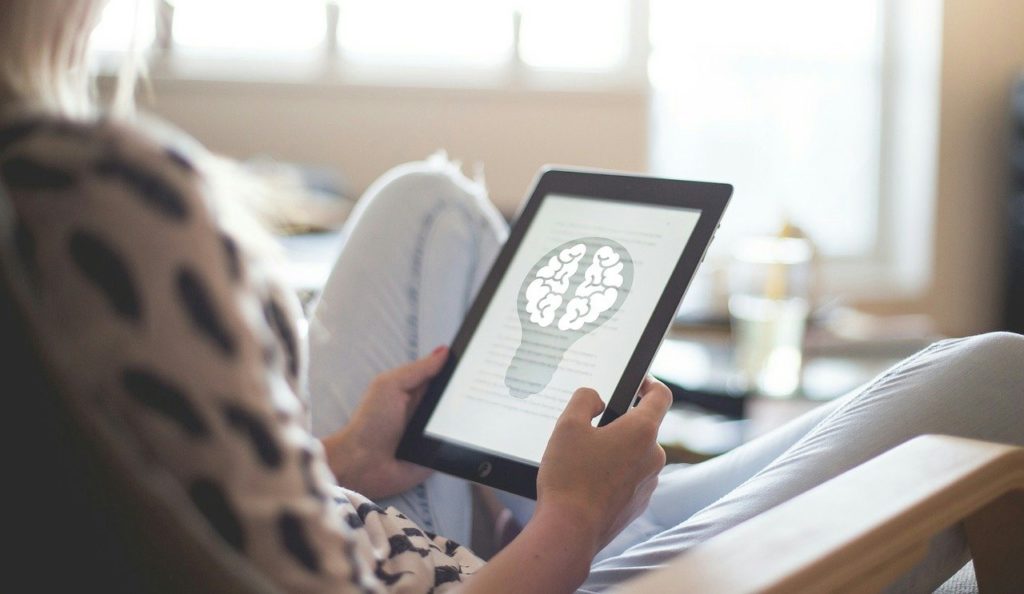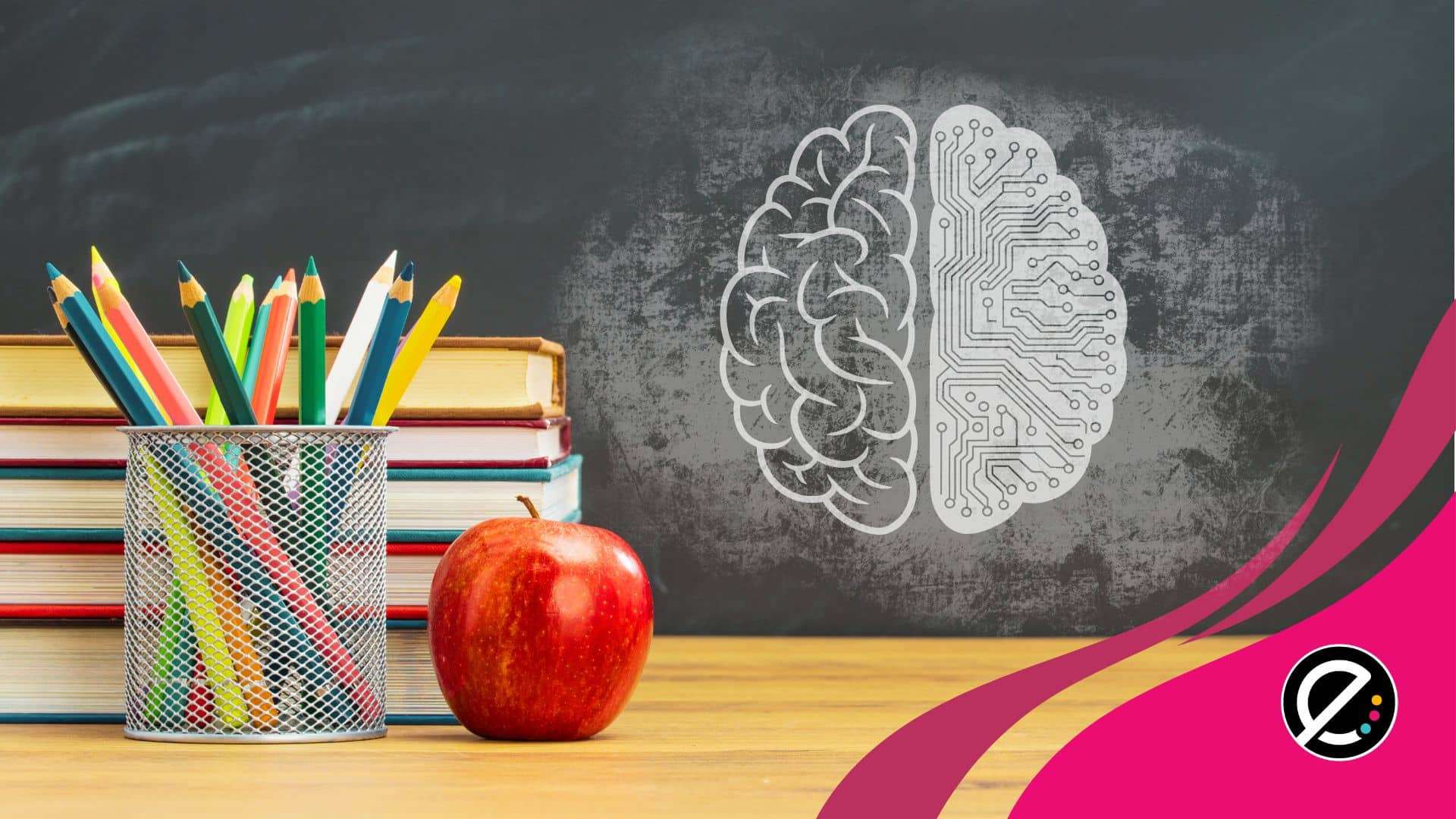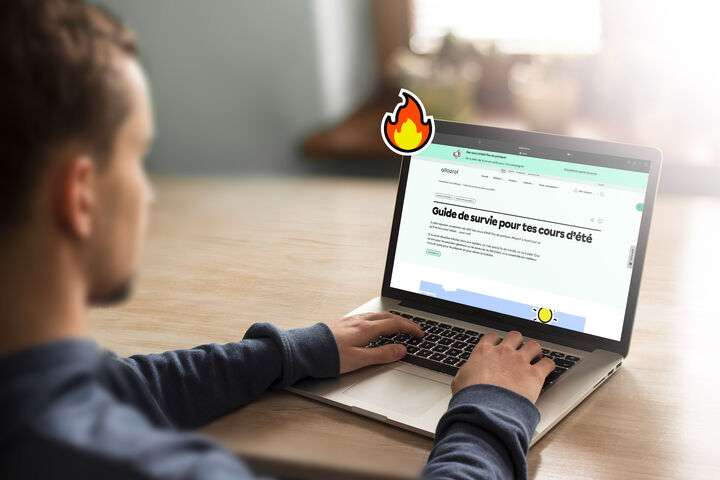De plus en plus d’enseignants s’intéressent à la classe inversée. Cette pratique pédagogique permet de transmettre les savoirs plus théoriques aux élèves par le biais de capsules vidéo et de consacrer plus de temps de classe à la réalisation de projets concrets. Une façon de faire qui se prête bien à l’enseignement à distance.
« Avec la classe inversée, l’enseignant devient davantage un guide qui accompagne ses élèves afin qu’ils puissent mettre en application les notions apprises », résume Karine Lépine, enseignante de mathématiques au Collège Nouvelles Frontières de Gatineau. Elle pratique la classe inversée depuis 7 ans et ne reviendrait pas en arrière.
Littéralement, la classe inversée signifie que l’enseignant inverse le modèle traditionnel : « la transmission des savoirs, normalement reléguée aux cours magistraux, se fait sous forme de vidéos écoutées à l’extérieur de l’école, tandis que les devoirs, la pratique des apprenants, se font en classe en présence de l’enseignant. La logique derrière cette inversion est de maximiser le temps de classe pour accompagner les apprenants au moment où ils en ont le plus besoin, soit lorsqu’ils réalisent des activités pédagogiques et qu’ils ont des questions contextualisées », selon la définition du CADRE21, qui offre une autoformation sur la classe inversée.
« Le plus grand avantage de cette pratique est que l’élève peut visionner chaque capsule à son rythme, appuyer sur pause, revenir en arrière, réécouter au besoin. Il devient plus autonome dans ses apprentissages. Cette façon de faire est facilitante pour plusieurs élèves », indique Vincent Lemieux, directeur à l’école primaire les Sittelles de Saint-Georges, qui offre de la rétroaction aux apprenants de la formation du CADRE21.
Dans le contexte actuel, il faut aussi mentionner que la classe inversée se prête très bien à l’enseignement à distance, surtout pour les élèves qui sont en mode hybride. Dans cette dynamique, les journées où ils sont à la maison, ils reçoivent quelques explications de l’enseignant, puis visionnent des capsules. Les jours de présence à l’école, ils passent à l’action avec des exercices pratiques, des travaux d’équipe, etc. L’enseignant offre alors un accompagnement plus personnalisé à chacun.
Les bonnes pratiques de la classe inversée
Mme Lépine et M. Lemieux tiennent à rappeler aux enseignants qui souhaitent expérimenter la classe inversée qu’il n’est pas nécessaire d’être un vidéaste expert. Les capsules sont destinées aux élèves avant tout, l’objectif étant qu’elles soient efficaces pour l’enseignement de notions théoriques et non qu’elles soient parfaites.
Ils sont aussi d’accord pour dire que l’enregistrement des capsules demande du temps, surtout au début, mais qu’elles font gagner du temps par la suite. En effet, certaines capsules pourront être utilisées avec plusieurs groupes ou pendant plusieurs années sans nécessairement avoir besoin d’être mises à jour.
Quelques conseils
- Rester soi-même, ne pas essayer d’adopter un style qui n’est pas le vôtre.
- Fractionner les notions à expliquer par bloc cohérent (une idée par vidéo).
- Enregistrer l’écran, la voix et les annotations.
- Être concis dans les explications, avec un langage adapté aux groupes d’âge.
- Privilégier des capsules qui ne durent pas plus de 8 minutes.
- Utiliser les logiciels qui se trouvent par défaut sur la plupart des ordinateurs (Windows Movie Maker, Keynote, iMovie, etc.).
- Déposer les vidéos sur une chaîne YouTube (vidéo non répertoriée) pour faciliter l’accès par les élèves.
- Demander la rétroaction des élèves à savoir si les capsules sont utiles ou assez vulgarisées, par exemple.
En complément
- Guide thématique de Carrefour éducation
- La classe inversée : pourquoi et comment?, Centre de pédagogie universitaire, Université de Montréal.
- Enseignement à distance : la qualité des vidéos importe-t-elle?, de l’École branchée
Pour aller plus loin, notre formation virtuelle en direct Création, captation et publication de vidéo pédagogique se tiendra le 15 mars de 19h30 à 20h30.
Vous pouvez aussi revoir ces formations passées :
- Comment capturer ce qui se passe à l’écran pour en faire une vidéo pédagogique
- Créer et faire créer des vidéos et présentations : survol de Clips, Adobe Spark et Explain Everything
Dimension(s) de la compétence numérique en lien avec cet article
9- Adopter une perspective de développement personnel et professionnel avec le numérique dans une posture d’autonomisation
Voir le Cadre de référence.







